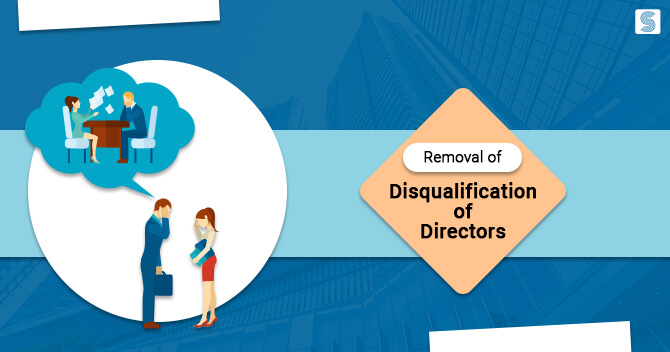Want to Remove a Director – What is the process?

Khushboo Priya | Updated: Jan 11, 2019 | Category: DIN
The process of removing a director from the company could be done in three different ways. If the director of the company isn’t active or has not attended any of the board meetings in the past twelve months even after several notices has been sent, then the company can perform removal of director even before his/her term expires.
In this blog, we have discussed the various procedures for removal of a director from the company. But let’s first discuss a little about the directors and their role in the company.
Table of Contents
What is Removal of Director?
A director in the company plays a crucial role. He/she is liable for implementing and determining the company’s policy. Apart from this, there are several critical operations that directors are supposed to look after. Hence, it’s imperative for directors of the company to participate in the organization’s quintessential work.
If the director of the company isn’t actively participating in the company’s operation and working, then the director is surely not beneficial. As a result, you should remove him or her. Let us discuss how we can remove a director and in what circumstances.
Conditions for the Removal of director from the company
As per the provisions of the Companies Act 2013, Shareholders can remove a Director from the company even before his/her tenure expires, except in case of appointment by the Central Government.
Mainly, there could be three possible cases for the removal of directors from the company. They are as follows:
- In the case, the director didn’t attend three consecutive board meetings;
- Removal of director suo-moto by the board;
- When the director himself/herself submits the resignation.
Procedure of Removal of Director from the Company

Since there are three ways a director can be removed from the company, therefore, we will discuss all the three cases one by one. Let’s begin with the one described first–
1. When the director didn’t attend three consecutive board meetings in the year
As per section 167 of the Companies Act, 2013 if a director didn’t attend the Board Meeting for 12 months, starting from the day on which he/she was absent at the first meeting even after sending him/her due notice for all meeting, it will be considered that he/she has abandoned the office.
A Form DIR-12 should be filed on the director’s name.
Furthermore, for removal of director his/her name will be removed from the Ministry of Corporate Affairs
2. Removal of director suo-moto by the board
As per Section 169 of the Companies Act 2013, shareholders have the authority to remove the director by passing an ordinary resolution in a general meeting, except in the case the Director was not appointed by the Central Government or the Tribunal.
There are several steps in which the removal process can take place:
- There should be a Board Meeting by offering seven days notice to all the directors. Furthermore, an exceptional notice will go to the directors informing them about the removal of the director.
- Next, a resolution for holding an extraordinary general meeting will be passed along with the resolution for the removal of the director subject to the approval of the shareholders on the day when the board meeting will be held.
- Again there would be a general meeting by providing 21 days clear notice to the directors. In the meeting, the members would be supposed to vote on the matter. If the majority votes in favour of the decision, then the resolution will be passed.
- But before the resolution is actually passed, the director will be provided with an opportunity for being heard.
- After the resolution is passed, the same procedure needs to be followed, and the Form DIR-11 and DIR-12 must be filed along with the same attachments of the Board Resolution, Ordinary Resolution.
- After the form has been filed, the name of the director will be scratched off from the Ministry of Corporate Affairs website [1] .
3. When the director himself/herself submits the resignation
If by any means or reasons, the director of the company doesn’t wish to continue with the company and want to resign, then he or she can resign following the below-described steps:
- The company shall commence a Board Meeting by providing seven days of clear notice which implies 7 days notice excluding the day on which the notice was sent and received.
- In the meeting, the Board members will discuss with each and decide whether to accept the resignation or not.
- If they accept the resignation, they will further pass a Board Resolution accepting the resignation in the following format:
RESOLVED THAT
the resignation of the director be and is hereby accepted with an immediate effect.
FURTHER RESOLVED THAT
the Board places on record its appreciation for the assistance and guidance provided by the director during his tenure as Director of the Company.
RESOLVED FURTHER THAT
directors of the company be and are hereby jointly authorized to do all the acts, deeds and things which are obligatory to the resignation of an aforesaid person from the directorship of the Company.
- After the resolution has been passed, Form DIR-11 needs to be filed by the outgoing director along with the Board Resolution, Proof of delivery of the resignation letter and copy of the resignation letter.
- The director is accountable for the filing of DIR-11, Form DIR-12 is the responsibility of the company which has to be filed with the Registrar of Companies (RoC) along with the Registration letter and the Board Resolution.
- Once all the forms are filed, the name of the director will be removed from the master data of the company on the Ministry of Corporate Affairs website (MCAs).
Consequences of Not Filing DIR-12
If the company fails to file the e-form DIR-12 within 30 days of appointment or resignation, then the following penalty will be applicable:
- One time of actual Government fees until 15 days;
- Two times of the actual government fees if it exceeds more than 15 days;
- If it exceeds 30 days to 60 days, then a penalty of 4 times of the actual government fees is applicable;
- In case it exceeds 180 days, then 10 times of the actual government fees are applicable;
- Also applicable to the company which fails to file the DIR -12 within 300 days from the date of passing the resolution, then the company is supposed to pay 12 times of the actual government fees plus compounding offense.
Final Words
In a nutshell, if you want to remove a director of the company, in any case, you need to issue a clear notice for some specific days as described above. And, the final decision will be taken only if the Board Members vote in favour of the decision. Before passing the Board Resolution, the director will be given a chance to provide justification if any. If he/she continues with the decision to leave abandon the company, then the Board Resolution will be passed.
The director is supposed to file the specific form as described above and submit it to the RoC. Lastly, the name of the director will be abolished from the company’s master data and from the MCA’s website.














